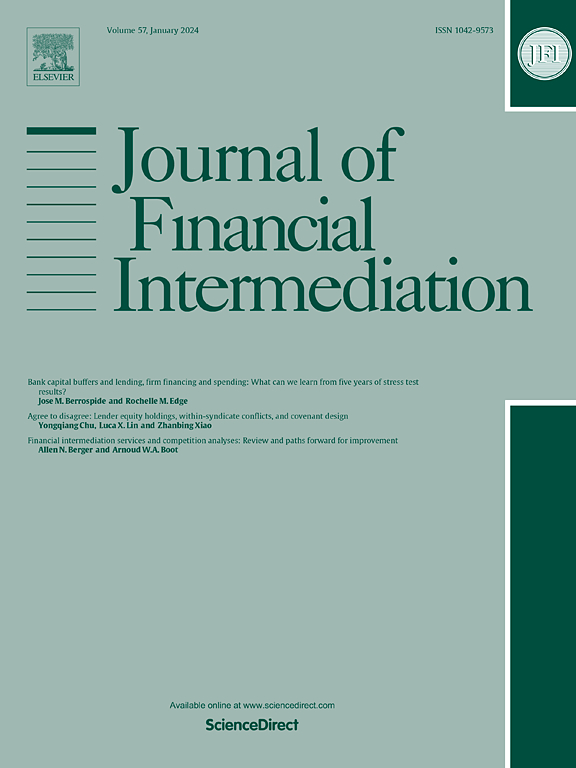内部评级和银行不透明:来自分析师预测的证据
IF 3.7
1区 经济学
Q2 BUSINESS, FINANCE
引用次数: 0
摘要
我们证明,依赖内部评级(IRB)模型来计算信用风险和资本要求降低了银行的不透明度。对IRB模型的更大依赖与更低的绝对预测误差和分析师对预期银行每股收益的分歧减少有关。对于那些对最不透明的贷款采用内部评级并采用高级版本的IRB模型的银行来说,这些结果更为明显,后者需要更细致的风险评估和更多的风险参数披露。这一结果源于采用内部评级的银行具有更高的盈余信息量和更全面的信用风险披露。我们采用工具变量方法来验证我们的发现。本文章由计算机程序翻译,如有差异,请以英文原文为准。
Internal ratings and bank opacity: Evidence from analysts’ forecasts
We document that reliance on internal ratings-based (IRB) models to compute credit risk and capital requirements reduces bank opacity. Greater reliance on IRB models is associated with lower absolute forecast error and reduced disagreement among analysts regarding expected bank earnings per share. These results are stronger for banks that apply internal ratings to the most opaque loans and adopt the advanced version of IRB models, which entail a more granular risk assessment and greater disclosure of risk parameters. The results stem from the higher earnings informativeness and the more comprehensive disclosure of credit risk in banks adopting internal ratings. We employ an instrumental variables approach to validate our findings.
求助全文
通过发布文献求助,成功后即可免费获取论文全文。
去求助
来源期刊

Journal of Financial Intermediation
BUSINESS, FINANCE-
CiteScore
8.60
自引率
7.70%
发文量
45
期刊介绍:
The Journal of Financial Intermediation seeks to publish research in the broad areas of financial intermediation, financial market structure, corporate finance, risk management, and valuation.
 求助内容:
求助内容: 应助结果提醒方式:
应助结果提醒方式:


